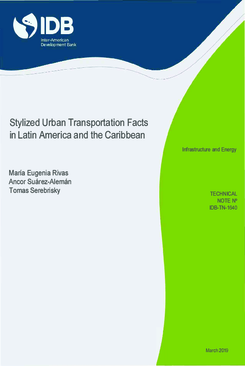Stylized Urban Transportation Facts in Latin America and the Caribbean
Date
Mar 2019
The urban population in Latin America and the Caribbean (LAC) has increased significantly over the last decades. Currently, almost 80 percent of the LAC population lives in cities, that is, more than 525 million people, and this trend is projected to continue. More people mean more cars. Motorization rates in the region keep rising while the share of public transportation is decreasing. Financial sustainability of the urban public transport sector in LAC is at stake. Most service providers do not cover their own operational costs and the productivity of public transportation has stagnated (or even decreased) over time. This represents a challenging scenario for improving transport services in the region, especially from a quality dimension. People in LAC travel shorter distances but their commute time is longer than in developed countries. Surveys show that users in the region are dissatisfied with public transport quality, not only with commute times but also in terms of comfort and cleanliness and the fares they pay. Women are particularly affected, as they rely more heavily on public transport than men. Moreover, the effects on CO2 emissions are notable, compromising environmental sustainability. Electromobility is still far from being a reality in the region. The stylized facts presented below describe a challenging scenario for urban transportation in LAC. This includes up-to-date information on the current challenges, risks, and tradeoffs the region faces if current mobility patterns remain unchanged.




